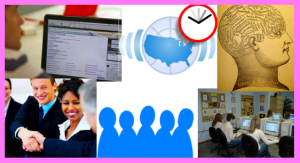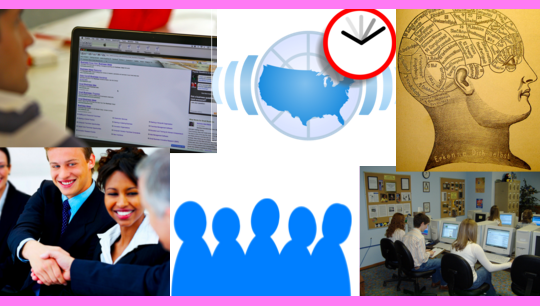


- Develop a Project Idea: 7 suggestions for finding project ideas: (For more ideas, go here)
- Work backward from a topic in the news, conversation, curiosity item, etc
- Use your standards look at past assessments that use your standards
-
- Find projects and ideas on the Web –
- www.bie.org
- can look up current science research on https://arxiv.org/
- can look up websites of societies that investigate your content
- Map your community – use students to scope out community opportunities
- Match what people do in their daily work can search for real world applications that go with curriculum topics
- Tie the project to local and national events – tie projects to current events and discoveries
- Focus on community service – research local non-profits
- Find projects and ideas on the Web –
- Decide on the Scope of the Project
- Factors that affect project scopes
- student readiness levels
- school schedule
- teacher level of comfort and expertise
- subject
- Role of adult experts from the community
- mentor students through many possible solutions to problems
- share knowledge and skills
- show relevance of knowledge and skills
- The Audience for the Project
- Externalize the enemy
- Involving audience members from outside the classroom raises stakes of presentations
- The more authentic the audience, the higher the stakes and motivation
- Externalize the enemy
- Student Autonomy
- How much do you want students to be involved in project design?
- Low involvement – teacher selects topic and learning outcomes
- Middle involvement – teacher solicits student input and negotiates topic and learning outcomes
- High involvement – students select topic and learning outcomes
- How much do you want students to be affect scaffolding design?
- Low involvement – teacher designs products & activities & timelines
- Middle involvement – teacher solicits student input
- High involvement – students design products, activities & timelines
- How much do you want students to be involved in project design?
- Factors that affect project scopes
- Select Standards
- What topics would you be embarrassed about if students couldn’t discuss them intelligently by the end of a project?
- Only include enough standards that you can adequately scaffold and assess
- Break down standards into related, specific student-friendly learning targets
- Also include district or school mandated initiative – examples: school-wide learning outcomes: written communication, oral communication, agency, collaboration, knowledge & thinking
- Incorporate Simultaneous Outcomes
- Scaffold and assess 21st century skills such as the SCANS skills
- Scaffold and assess useful habits of mind – for example study skills, note taking skills, etc.
- Work from Project Design Criteria
- Design Criteria Questions: For more criteria go here
- Meet standards?
- Engage students?
- Focus on essential understandings?
- Encourage higher-level thinking?
- Teach literacy and related fundamental skills?
- Allow all students to succeed?
- Use clear, precise assessments?
- Require the sensible use of technology?
- Address authentic issues?
- Project vs Activity-Based Teaching Strategies: Features that are unique to PBL projects
- students investigate overall challenging question
- scaffolding activities occur in context of overall challenge posed by driving question
- single activities are insufficient to address the entire challenge
- resolving overall challenge requires application of concepts and justification for these applications
- Design Criteria Questions: For more criteria go here
- Create the Optimal Learning Environment
- Involve partnerships with resources outside the classroom
- Alter the look and feel of classroom to make it look more like the workplace or make it more conducive to group work and discussions
- Allow students to see the whole before practicing the parts. Seeing the whole will enable students to better organize the parts in their new schema.
- Model how to transfer content and skills to real world applications
- Make schoolwork more like real work. Give students opportunities to practices processes and ways of thinking used by the pros.

Beginning with the end in mind helps teachers to design projects that meet the needs of their students, the rigor of the curriculum and the demands of school-wide and district-wide initiatives. Beginning with the end in mind involves deciding the target standards, the targeted levels of student autonomy, and the connections to real world tools and real world experts. It is important to check if projects are well-designed prior to committed the large amount of time needed to complete their design and to facilitate them.

Preparation Steps
- Develop a project idea that aligns to an upcoming bundle of standards.
- Decide how student input will influence project goals, topics, learning outcomes, time lines and activities.
- Recruit community partners to serve as supporting experts and audience members
- Use the Project Design reflection questions above (or the template and standards here) to evaluate and refine your project design
Early Implementation Steps
- Implement project design
- Use student input to refine activities, timelines and products
- Use frequent formative feedback to help students improve their learning and products at timely moments
- Scaffold and assess content learning targets
- Invite parents to presentations as panelists
Advanced Implementation Steps
- Scaffold and assess 21st century skills and character learning targets
- Cede expertise of content to partner professionals who assist with instruction
- Invite experts to presentations as panelists
- Once your students are very familiar with PBL and have demonstrated good use of autonomy, involve students in selection of project topics and design of project rubrics

